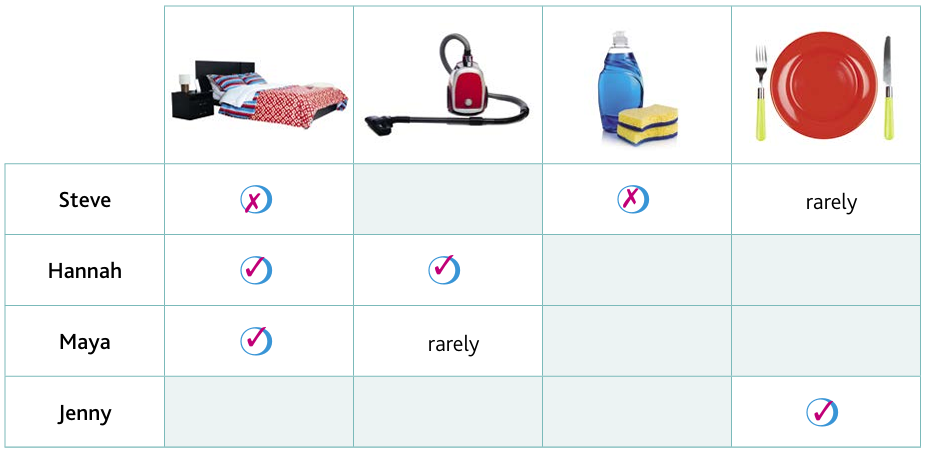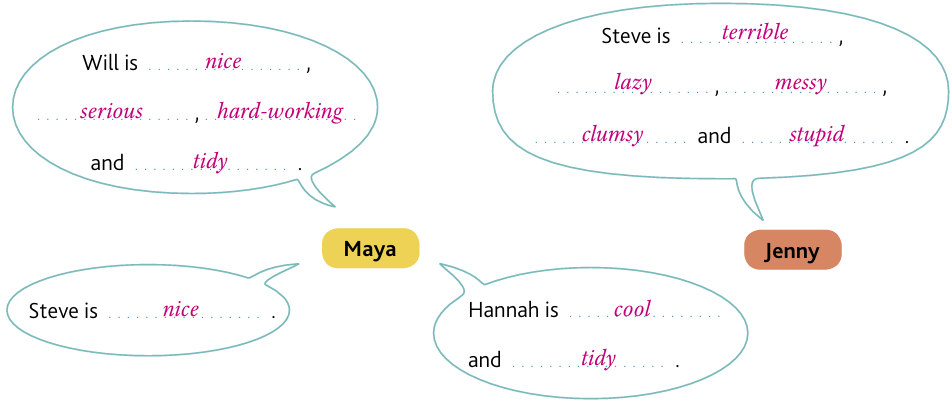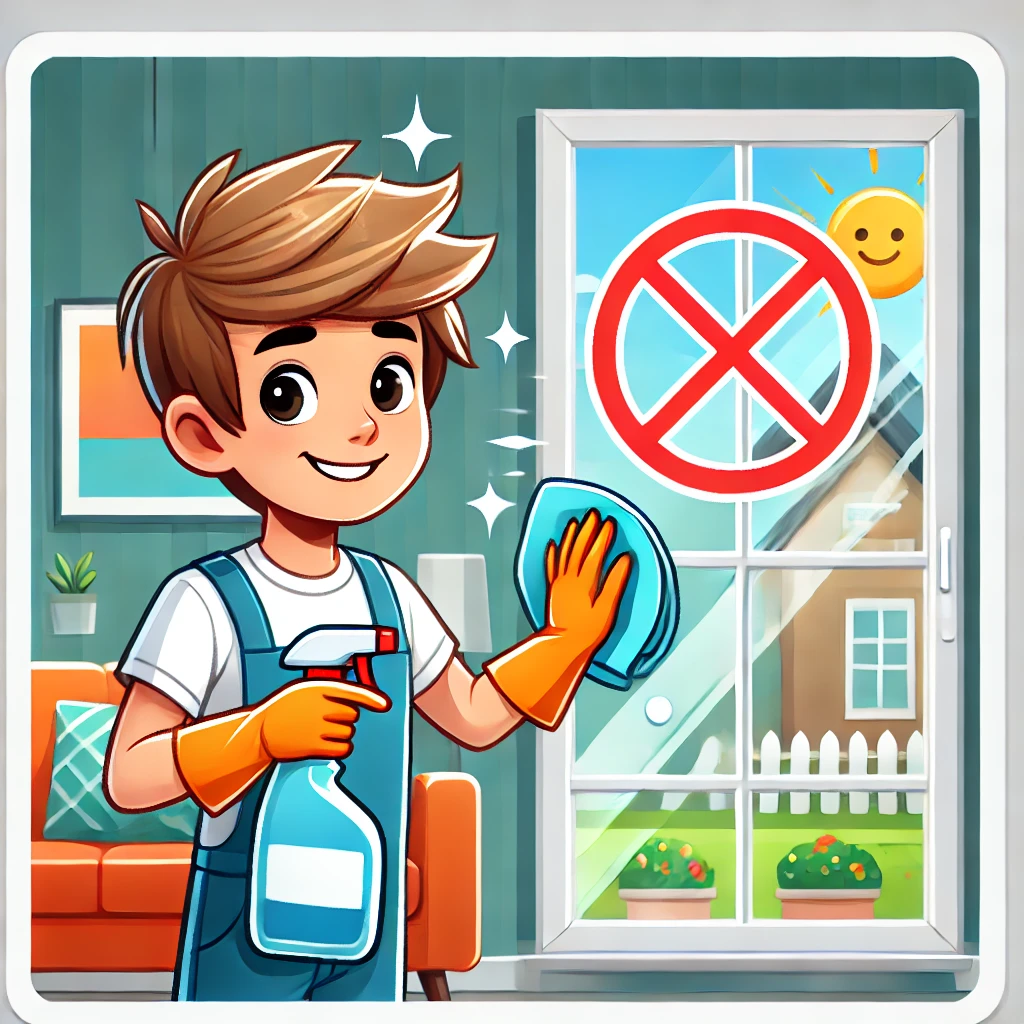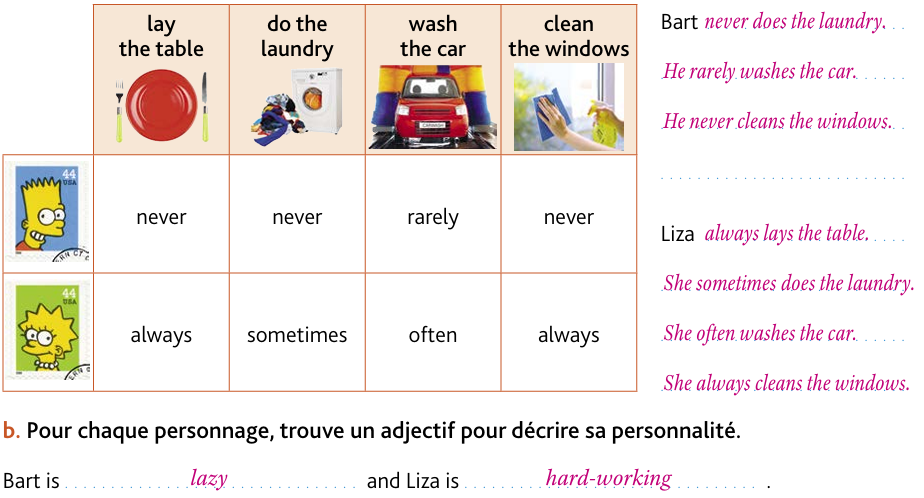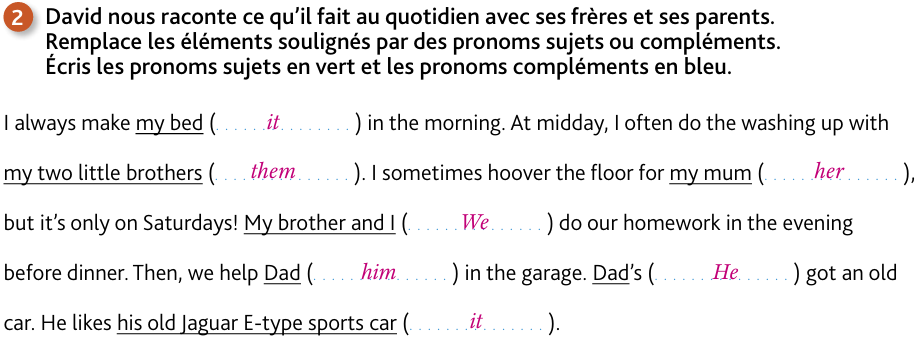Objectifs de communication :
- Parler des tâches domestiques
- Parler de sa personnalité et de celle des autres
Objectifs linguistiques :
- Les pronoms personnels sujets (révision)
- Les pronoms personnels compléments
- La prononciation du « s » de troisième personne au présent simple
- Le lexique des tâches quotidiennes et de la personnalité
Resources :
PDF: Who does what?
PDF: Opinions worksheet
PDF: Comic strip
PDF: Keep your house tidy! Worksheet
Contents
You are hard-working!
Preparing
1. Listen to the expressions. Write them in the right order.
- Lay the table
- Do the washing up
- Tidy your room
- Hoover the floor
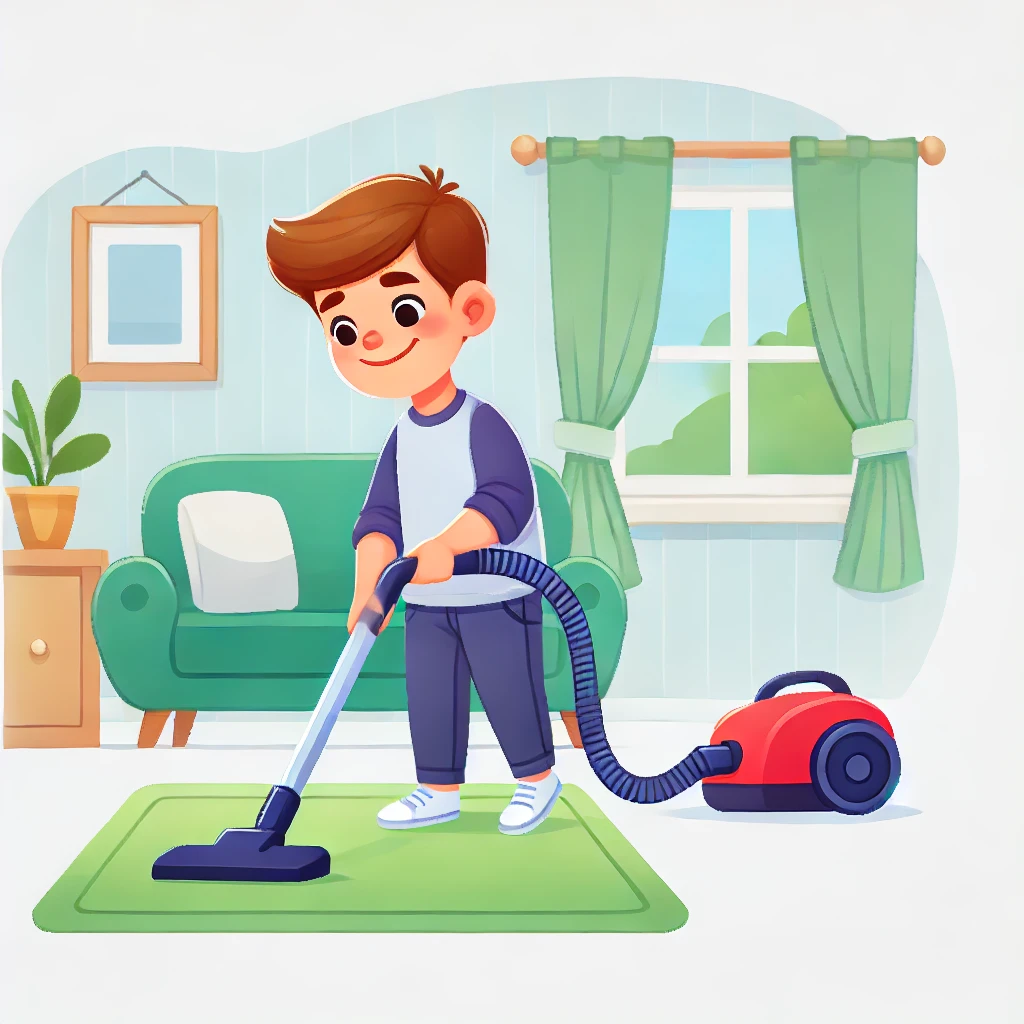
- Hoover the floor
- Tidy your room
- Lay the table
- Do the washing up
Traduction : Tâches ménagères
- Hoover the floor = passer l’aspirateur
- Tidy your room = ranger ta chambre
- Lay the table = mettre la table
- Do the washing up = faire la vaisselle
2. Listen and repeat the adjectives. Do you know the words in French?
tidy – messy – hard-working – lazy – nice – terrible
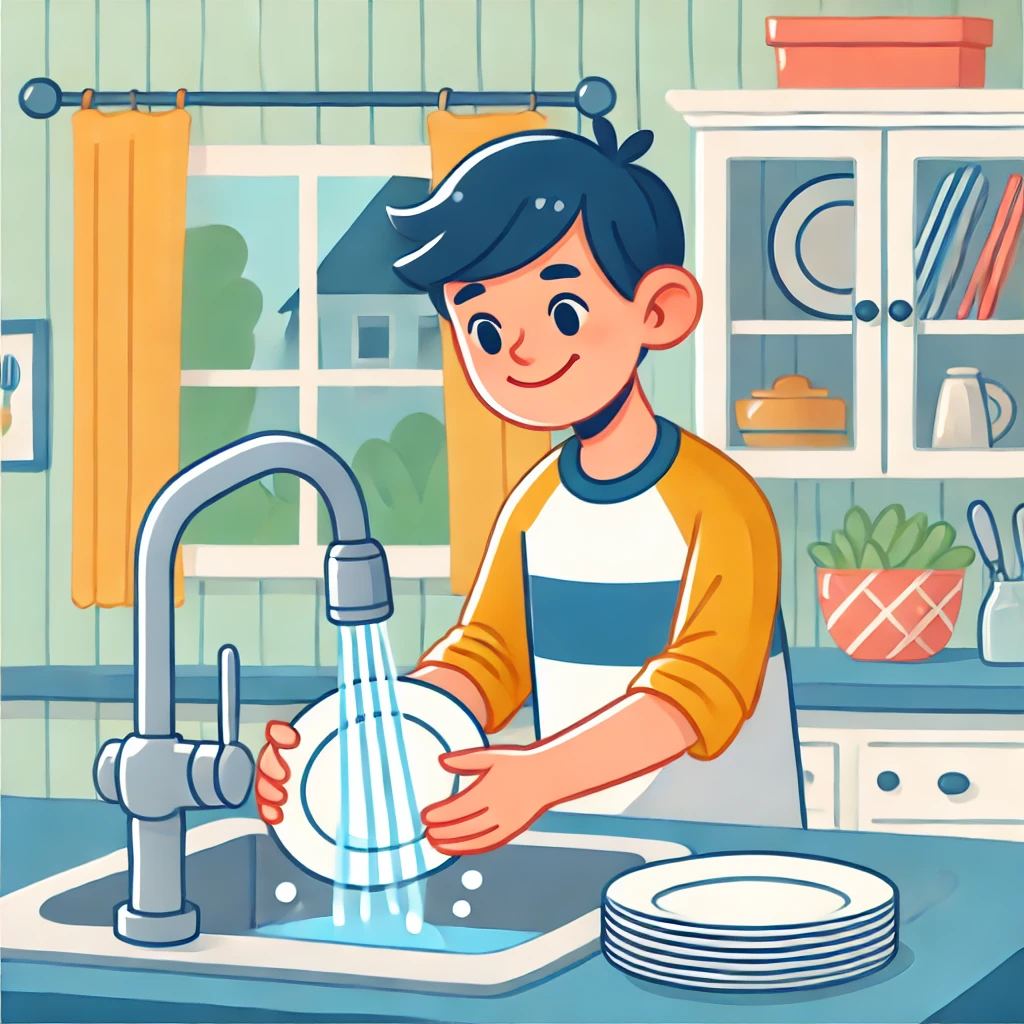
Traduction : Vocabulaire de la personnalité
- Tidy = organisé(e)
- Messy = désordonné(e)
- Hard-working = travailleur(se)
- Lazy = paresseux(se)
- Nice = gentil(le)
- Terrible = horrible
3. Copy the sentences, listen, and choose the right adjective.
Options: tidy – messy – hard-working – lazy – nice – terrible
- She’s so …………………………………..
- She’s so …………………………………..
- He’s …………………………………………..
- You’re so …………………………………. !
- She’s …………………………………………. !
- You’re ……………………………………….. !
- She’s so nice.
- She’s so lazy.
- He’s hard-working.
- You’re so messy!
- She’s terrible!
- You’re tidy!
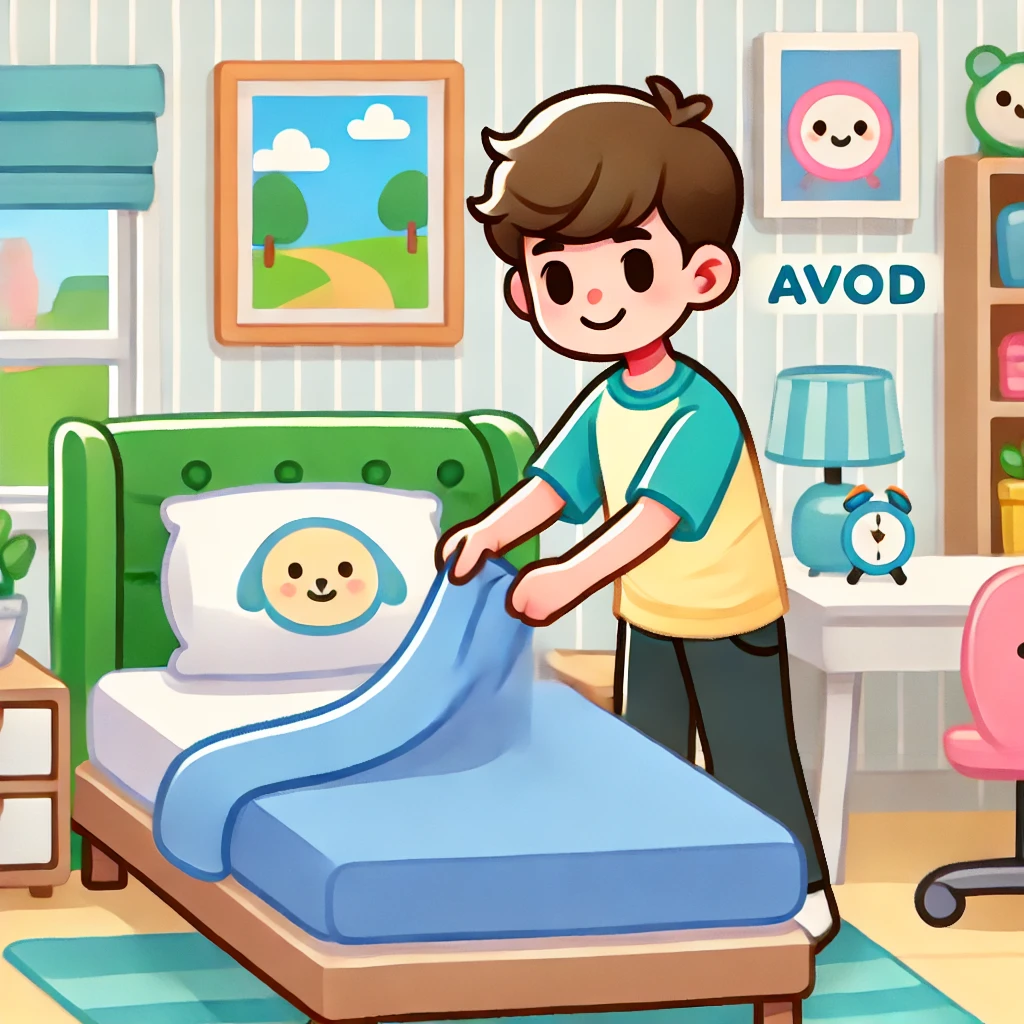
Vocabulary Kit: Personality
- Tidy ≠ Messy
- Hard-working ≠ Lazy
- Nice ≠ Terrible
Traduction : Vocabulaire de la personnalité
- Tidy = organisé(e) ≠ Messy = désordonné(e)
- Hard-working = travailleur(se) ≠ Lazy = paresseux(se)
- Nice = gentil(le) ≠ Terrible = horrible
Who does what?
Listening
1. Who does what? Listen to the dialogue. Put a tick (✔) when the character does the activity and a cross (✖) when he or she doesn’t. Listen to Maya talking to Jenny. (Maya speaks first)
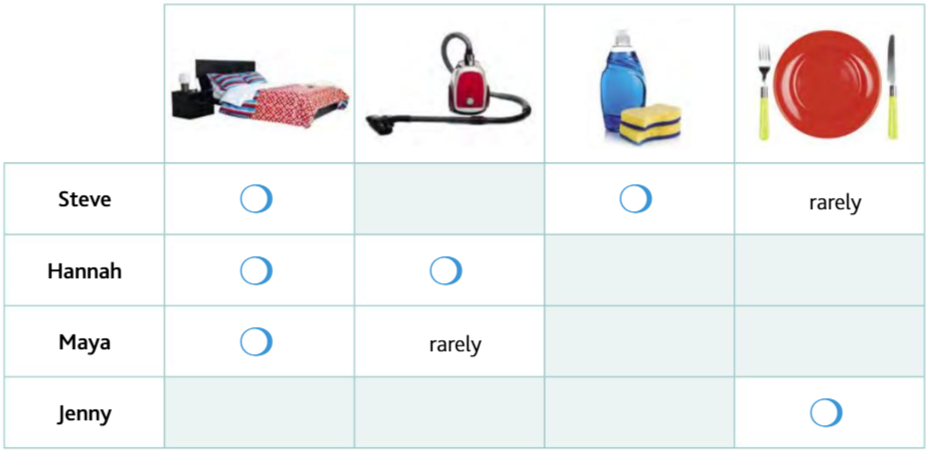
2. What are their opinions? Listen again. Take the opinions worksheet and fill in the balloons with the right adjectives.
Options: lazy – hard-working – terrible – nice (x2) – messy – tidy (x2) – serious – stupid – cool – clumsy
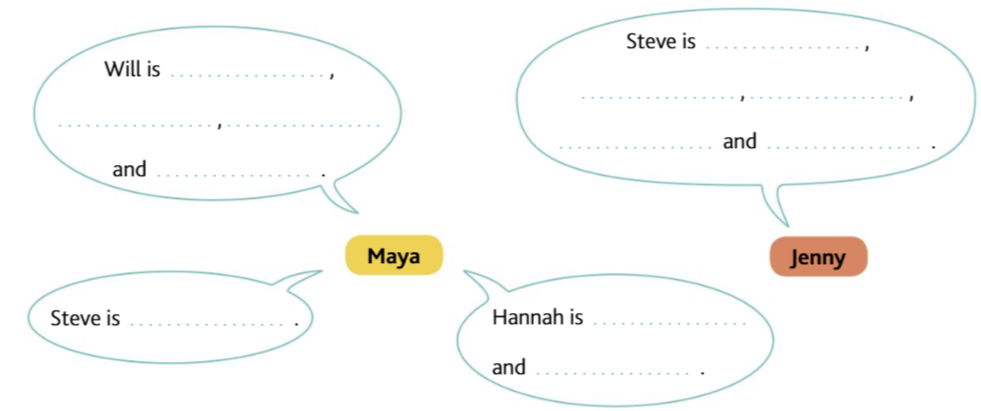
Grammar Kit
Steve? What’s wrong with him?
Steve ? Qu’est-ce qui ne va pas avec lui ?
Hannah helps me make my bed and I help her too.
Hannah m’aide à faire mon lit et je l’aide elle aussi.
Trucs & Astuces
Tu remarqueras que, comme pour le « s » du génitif (Steve’s shoes), le « s » de troisième personne au présent simple compte trois prononciations : /s/, /z/ ou /ɪz/.
The Simpsons
Speaking
- Say what you know about this family. Who’s your favourite character?
- Who and what can you see in the picture?
- Use an adjective to describe each Simpson, take a dictionary for new vocabulary.
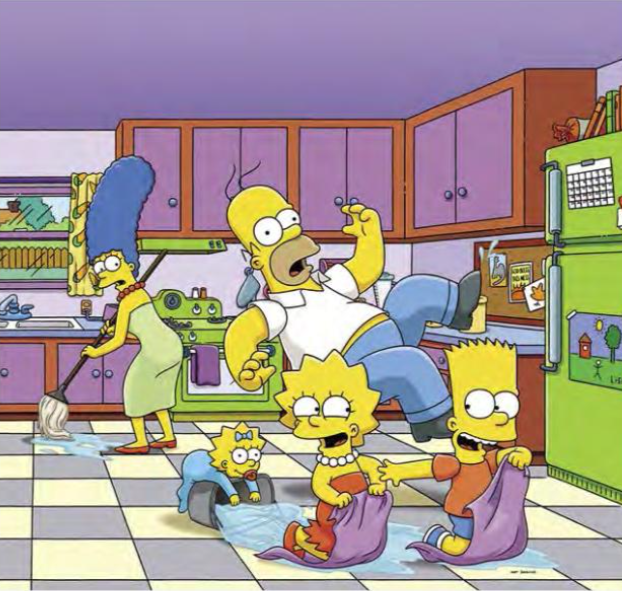
- Homer is messy.
- Marge is tidy.
- Lisa is hard-working.
- Bart is messy.
- Maggie is cute.
La prononciation du « s » au présent
The Melody of English
1. Écoute et répète.
- He rarely lays the table. /z/
- He never washes his car. /ɪz/
- Tom likes you and Helen loves me. /s/, /z/
2. Observe les transcriptions phonétiques ci-dessus et recopier avec les bonnes réponses.
– Dans la phrase 1, le s de la troisième personne du singulier suit un son de consonne / voyelle. Il se prononce /s/ – /z/ – /ɪz/.
– Dans la phrase 2, on a ajouté au verbe wash un e avant le s de la troisième personne du singulier pour en faciliter la prononciation. Les lettres es se prononcent /s/ – /z/ – /ɪz/.
– Dans la phrase 3, le s de la troisième personne du singulier suit un son de consonne / voyelle. Il peut se prononcer de deux façons : /s/ – /z/ – /ɪz/.
Answers: Exercise 2
Phrase 1: Le s suit un son de voyelle. Il se prononce /z/.
Phrase 2: Un e a été ajouté pour faciliter la prononciation. Les lettres es se prononcent /ɪz/.
Phrase 3: Le s suit un son de consonne. Il se prononce /s/ ou /z/.
3. Écoute ton professeur prononcer les verbes suivants, écris les mots et écris la bonne prononciation du son s (/s/, /z/, ou /ɪz/).
- helps
- does
- washes
- likes
- lays
- plays
- watches
- hoovers
- brings
- breaks
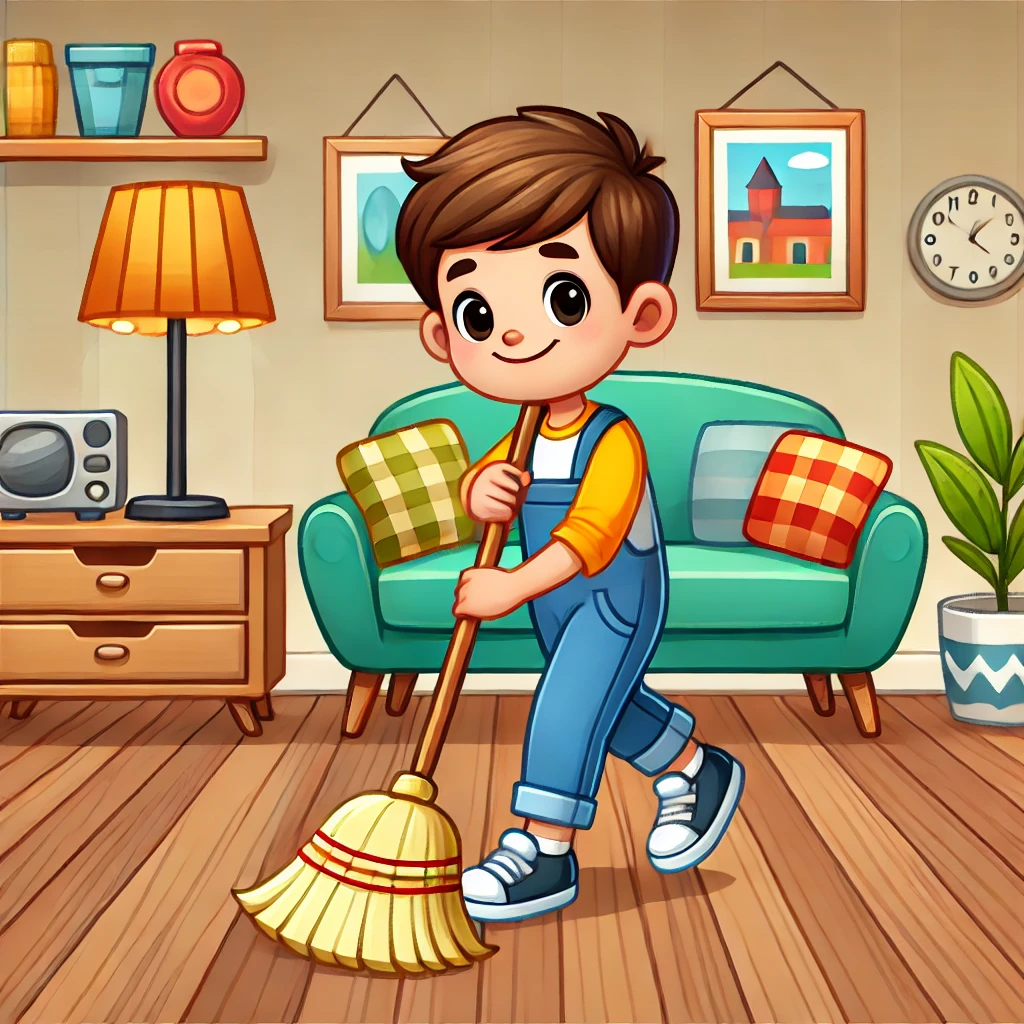
Réponses pour l’exercice 3
| Verbe | Prononciation |
|---|---|
| helps | /s/ |
| does | /z/ |
| washes | /ɪz/ |
| likes | /s/ |
| lays | /z/ |
| plays | /z/ |
| watches | /ɪz/ |
| hoovers | /z/ |
| brings | /z/ |
| breaks | /s/ |
Les pronoms personnels
1. Observe et recopier ces phrases. Relie par une flèche le mot en gras avec le mot auquel il renvoie.
Example: I always lay the table alone, and he never talks to me.
- Maya: “Steve? What’s wrong with him?”
- Jenny: “Boys are stupid. I definitely hate them!”
- Maya: “Hannah helps me make my bed and I help her too.”
Réponses pour l’exercice 1
- him = Steve
- them = Boys
- her = Hannah

2. Recopier les phrases avec les bonnes réponses
- Ces mots renvoient à des noms / verbes / adjectifs.
- Ils sont en position de sujet / complément.
Réponses pour l’exercice 2
- Les mots renvoient à des noms.
- Ils sont en position de complément.
3. Recopie et complète ce tableau.
| Pronoms personnels sujets | Pronoms personnels compléments |
|---|---|
| I | … |
| … | you |
| he | … |
| she | … |
| … | it |
| we | … |
| they | … |
Réponses pour l’exercice 3
| Pronoms personnels sujets | Pronoms personnels compléments |
|---|---|
| I | me |
| you | you |
| he | him |
| she | her |
| it | it |
| we | us |
| they | them |
You're so lazy!
Mini-Task
- Create the dialogue of the comic strip. The two characters express reproaches about doing or not doing the housework. Use the expressions you know (hoover the floor, make your bed, tidy your room, lay the table, do the washing up) and the adverbs of frequency.
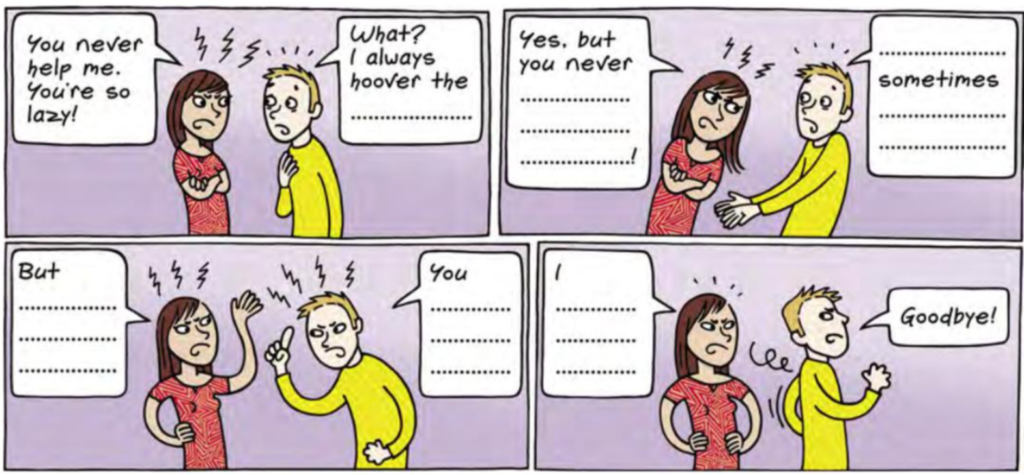
Mini-Task
2. With a friend, act out the dialogue.
